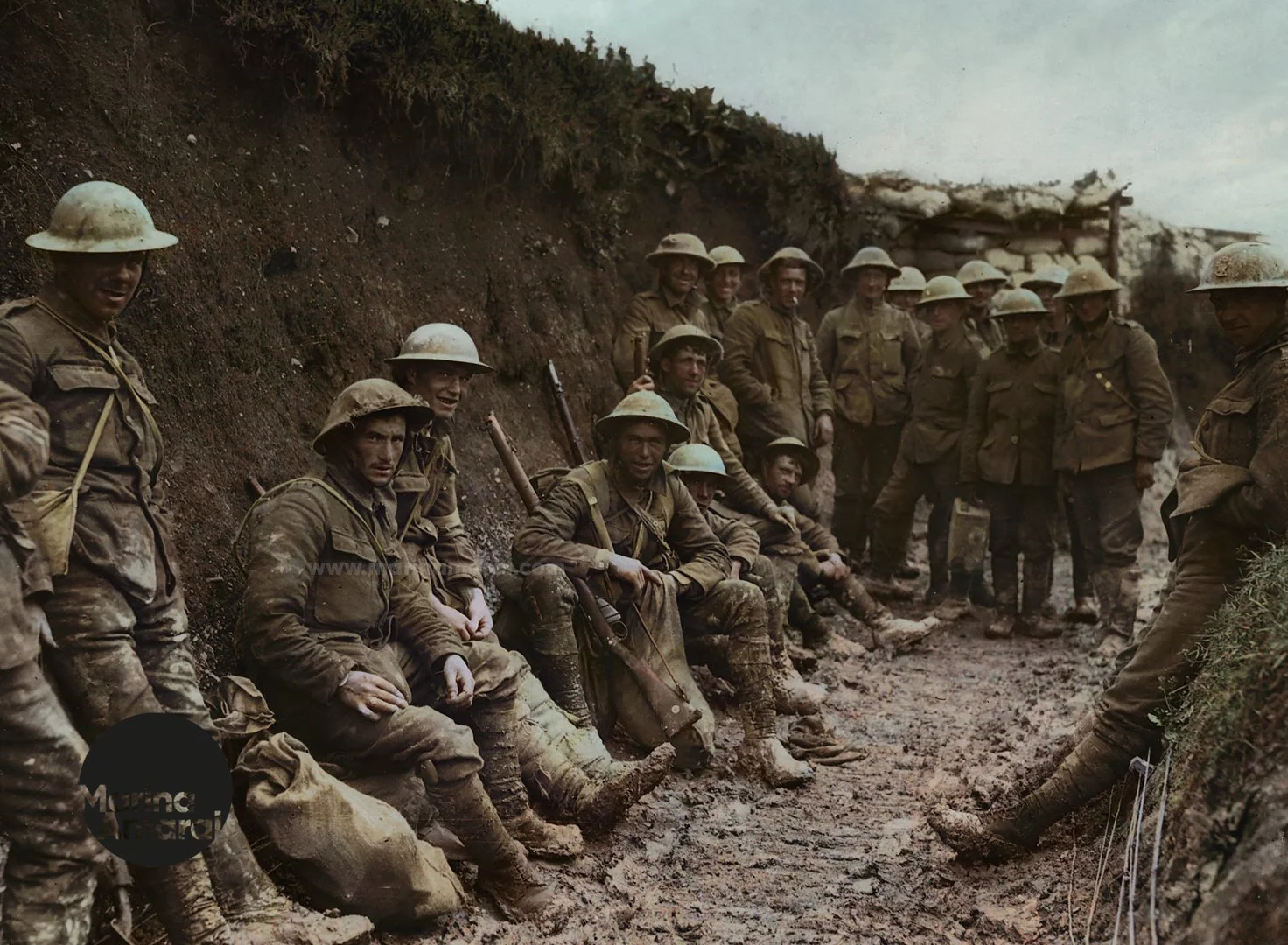VERY RARE! WWI Battle of the Somme 1/18th London Regiment Named B.E.F. Soldier's Trench Combat Bible




























VERY RARE! WWI Battle of the Somme 1/18th London Regiment Named B.E.F. Soldier's Trench Combat Bible
Comes with a hand-signed C.O.A. and a detailed document with additional research
This extremely rare and museum-grade World War I British Expeditionary Force (B.E.F.) soldier’s personal bible was carried by B.E.F. soldier Albert M. (573506) of the infamous 1/18th London Regiment. This heavily used and worn WWI soldier’s bible was carried into combat and saw action in some of the most famous battles of The Great War including The Battle of Aubers Ridge, The Battle of Festubert, The Battle of Loos. In 1916-1917 the 1/18th London Regiment fought during the German attack at Vimy Ridge, and on The Somme in the Battle of Flers-Courcelette capturing High Wood, The Battle of Transloy Ridges in which they captured Eaucourt l’Abbaye and the attacks on the Butte de Warlencourt. In 1918 the 1/18th London Regiment saw action in the Battle of Messines, the Third Battles of Ypres and The Cambrai Operations where they captured Bourlon Woord and fought against fierce German counterattacks. In 1918 the 1/18th London Regiment also saw action on The Somme and the Final Advance in Artois including making the official entry into Lille. At the Armistice, the forward units of the 1/18th London Regiment had reached Franses-lez-Buissenal.
This very rare bible is one of only a handful remaining of the 1/18th London Regiment and is the only 1/18th London Regiment soldier’s bible available for sale in the public sector. This is a once-in-a-lifetime chance to own an incredibly rare book from one of World War I’s more famous regiments.
The 1/18th London Regiment and the British Expeditionary Force: A Chronicle of Valor and Sacrifice during World War I:
World War I, often referred to as the Great War, stands as one of the most devastating and consequential conflicts in human history. Among the many regiments that served on the front lines, the 1/18th London Regiment, also known as the London Irish Rifles, played a significant role as part of the British Expeditionary Force (BEF). From the early stages of the war to the final moments of the conflict, the London Irish Rifles demonstrated unwavering dedication, resilience, and courage through their participation in key battles, including the Battle of Aubers Ridge, the Battle of Festubert, the Battle of Loos, the German attacks at Vimy Ridge and the Somme, the Battle of Flers-Courcelette, the Battle of Transloy Ridges, the attacks on the Butte de Warlencourt, the Battle of Messines, the Third Battles of Ypres, the Cambrai Operations, the Final Advance in Artois, and their eventual presence in Lille during the Armistice.
The Battle of Aubers Ridge marked the London Irish Rifles' introduction to the harsh realities of trench warfare in May 1915. Their valor and resolve were evident as they engaged in fierce combat against well-entrenched German positions. The subsequent Battle of Festubert in the same month saw the regiment's continued involvement, demonstrating their resilience despite challenging conditions.
One of the most significant chapters in the regiment's history was the Battle of Loos in September 1915. This battle was part of a larger British offensive and saw the London Irish Rifles engaging in intense fighting, including the capture of key objectives. Their role in this battle exemplified their dedication and tenacity, as they played a vital part in the broader assault.
In 1916 and 1917, the regiment found themselves embroiled in the German attack at Vimy Ridge and the brutal Battle of the Somme. During the Battle of Flers-Courcelette on the Somme in September 1916, the London Irish Rifles captured High Wood, demonstrating their combat prowess and strategic significance. The Battle of Transloy Ridges further showcased their capabilities as they successfully captured Eaucourt l’Abbaye, contributing to the relentless pursuit of victory.
The following year, the regiment's valor was put to the test once again during the Battle of Messines. This battle highlighted their ability to adapt to evolving tactics and maintain their determination in the face of adversity. The Third Battles of Ypres and the Cambrai Operations in 1917 were similarly demanding, as the London Irish Rifles faced intense fighting and fierce German counterattacks. Their capture of Bourlon Wood during the Cambrai Operations underscored their ability to achieve significant objectives amidst challenging circumstances.
As the war neared its end, the London Irish Rifles remained steadfast. In 1918, they were a vital presence on the Somme and played a crucial role in the Final Advance in Artois, a series of operations that marked the culmination of the BEF's efforts. Their entry into Lille was a testament to their resilience and their contribution to the eventual Allied victory.
By the time the Armistice was declared, the forward units of the 1/18th London Regiment had reached Franses-lez-Buissenal. This location marked the culmination of their long and arduous journey through the battlefields of World War I. The London Irish Rifles' participation in numerous battles and campaigns exemplified their dedication, sacrifice, and heroism, as they played an integral part in shaping the course of the war.
In conclusion, the 1/18th London Regiment, also known as the London Irish Rifles, emerged as a symbol of courage, determination, and sacrifice during World War I. Their participation in battles such as the Battle of Aubers Ridge, the Battle of Festubert, the Battle of Loos, and numerous other campaigns showcased their unwavering commitment to their country and their fellow soldiers. Through their contributions on the front lines, the London Irish Rifles played a crucial role in the British Expeditionary Force's efforts and ultimately contributed to the Allies' victory in the war. Their legacy stands as a testament to the resilience and bravery of those who served in this renowned regiment.